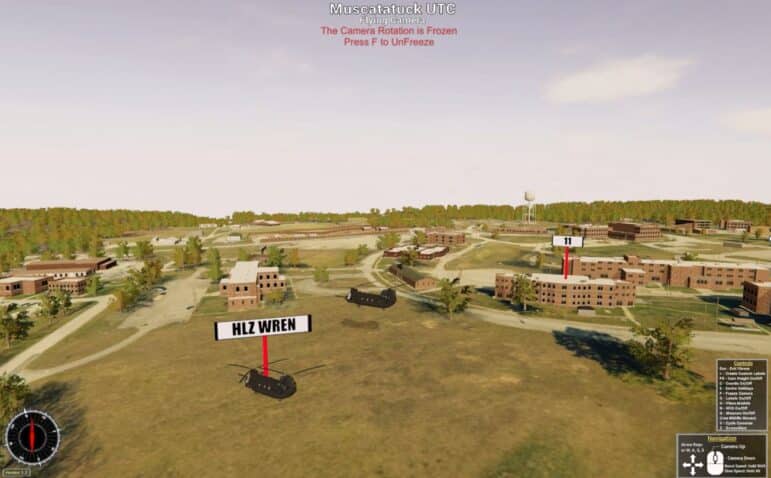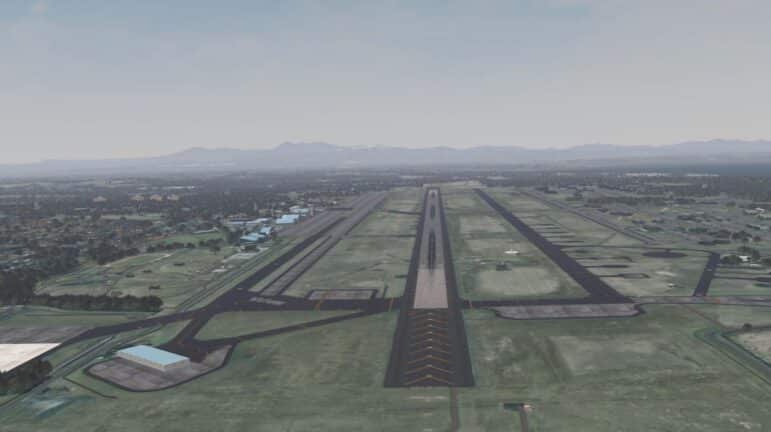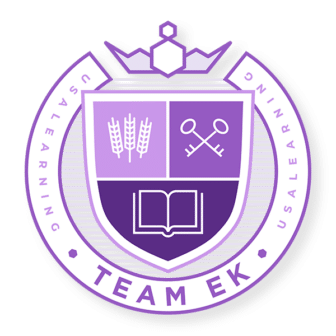Enterprise Knowledge assembled Team EK to deliver advanced learning solutions as part of the USA Learning contract. We’ve invited world-leading subject matter experts to offer guest posts in our Knowledge Base, as part of our ongoing commitment to thought leadership in Learning and Knowledge Management.
This contribution to our Knowledge Base is authored by Compass Point.

and natural features immerse the learner
When we hear the phrase ‘Virtual Reality,’ most of us think of innovative video games, futuristic science fiction movies, and intense amusement park rides. However, Virtual Reality (VR) supports more practical objectives than just entertainment, and this dynamic technology is both more accessible and applicable to your own work supporting training initiatives than you might imagine at first glance.
What is Virtual Reality?
Virtual Reality (VR) is an immersive artificial 3D environment created using computer modeling and simulation. Using specially designed hardware—such as goggles, headsets, gloves, or bodysuits—with custom software, users can explore and interact intuitively with the VR environment. In the context of VR for learning, this means we can put people into a scenario to learn by doing, as opposed to just sitting in a classroom or reading a textbook. VR Learning results in much greater knowledge retention because the learner is doing, not just listening or watching. These simulated environments allow learners to literally step through a training experience, achieving learning goals in ways that are both highly engaging and tremendously effective.
In our experience, realistic VR environments crafted from real world inputs yield some of the best overall learning opportunities. These inputs can include satellite imagery, elevation data, cultural features, photos, building schematics, blueprints, and more. By using high-quality, next-level visual graphic effects combined with a cross-platform game engine, we can produce 3D environments that include buildings, roads, monuments, and other natural and man-made features that immerse the learner. Notably, as software and methodologies have advanced, we can deliver tailored VR environments within a few hours, enabling rapid, responsive training that allows the user to develop a high degree of situational and spatial awareness by interacting with a realistic and immersive 3D environment.
Today, modern VR capabilities allow every organization to provide exceptional training opportunities to their personnel, supporting industries as diverse as defense, education, medical services, the physical sciences…the possibilities are limited only by the available source data.
How Does VR Apply to My Mission?
The need for more realistic training that acknowledges the practical realities of today’s fiscally constrained operating environments reaches across missions at every type of organization. As organizations seek to grow the capabilities, capacities, and quality of personnel skillsets, improving the services offered to constituents and increasing retention of valuable experienced personnel, all while working with limited resources and reduced opportunities for travel, VR Learning presents an elegant solution. Successfully meeting these needs, VR training offers a flexible, responsive option for an exceptional variety of technical and non-technical scenarios, allowing users to practice skills, develop a mental picture of a geographic area, and improve their spatial understanding and situational awareness. For example, VR training allows organizations to:

- Provide hands on learning of vocational skills, such as drone piloting or aircraft repair without risking damage to expensive hardware;
- Place users in role-based environments as a paramedic, firefighter, or law enforcement officer, allowing them to solve complex problems in real-time without risking injury;
- Take users on a VR tour of historical locations, offering them an immersive experience at the scale of historical events;
- Teach a help-desk representative how to deescalate an uncomfortable situation with a customer who is becoming aggravated; and
- Develop pollution analysis techniques by creating detailed 3D maps of geospatial and topographic data to support rapid assessment of water and wind flows in geographic areas of concern.
Live training requires significantly more funding and logistical effort to achieve results quite similar to those offered by virtual training technologies. By using VR, organizations at every level can provide their personnel with better subject matter understanding at reduced cost and lowered risk by allowing users to learn and make mistakes in the virtual world. Users are able to adapt their solutions and approaches to ensure more acceptable outcomes in an environment that is exponentially more flexible and affordable than live training can typically support. In addition, well-designed VR modules can drastically reduce the time required to maintain and deploy refreshed training content, ensuring users are always training with the most current information available.

cost-effective way
For example, if we developed a training program for law enforcement, we might support a surveillance mission by building a training scenario to familiarize the law enforcement officers with the specific area, better preparing them for operations once they arrive at the real-world location. This approach allows them to walk through or fly over the area and plan or rehearse actions during the mission without putting themselves or their resources at risk. VR engineers can include accurate representation of real-world structures and features based on the most current satellite imagery to increase the realism of the environment, allowing the officers to confidently rehearse the assignment, select surveillance positions and travel routes, identify possible blind spots, and develop contingency plans, increasing their ability to successfully execute the mission. VR engineers could also adapt the scenario as the mission requirements evolve, updating the virtual environment as needed to include virtual operation of actual equipment emulations, such as drones, vehicles, and interaction with virtual people.
Best Practices for Getting Started with VR Learning
With years of experience in the field, we’ve been pleased to see how VR Learning has evolved from a highly complex and expensive, enterprise level investment initiative to a much more flexible set of options. Both hardware and software have moved from a massive investment to a small expense with several options to “buy or borrow.”
Because of these shifts, we’re now in a place where our best practices approach can focus on the end user, strong learning use cases, and engaging learning stories rather than unwieldy procurements or implementations.
You can quickly demonstrate the value of VR Learning to your organization by focusing on these best practices:
Define the Requirements: Begin by defining your VR training goals and objectives. What are your learning objectives? What are your measurements for success? Defining high-level objectives like this in collaboration with our VR Learning experts can quickly translate into technical requirements.
Develop a Rapid Proof of Concept: For many audiences, VR still sounds more like something from Star Trek than an approachable learning option. That’s why we always recommend beginning with a Proof of Concept (POC) module using as much existing source data as possible. This provides something real to stakeholders, proving the value and approachability of VR to those who may be skeptical while simultaneously helping to validate the design and learning approach.
Review & Revise: It is important to listen to your users and incorporate their feedback into your training content and modules. Early in the training development process, have independent reviewers evaluate the training module for accuracy and suggested improvements. If a training module has been deployed, ask your students how the training worked for them. Where was the material or scenario confusing? What additional information or situation would improve the next delivered training? Once you get that feedback from your students, review and revise your content to reflect their insights. Your students will benefit from with increased skill sets and you will prove your ability to provide responsive, effective training content that drives improved organizational performance.
Advocate for VR Learning: VR Learning is still a new idea for many organizations, and the concept may need an introduction showing how this technology can support the mission and build the organizational culture. By understanding, explaining, and demonstrating the effective teaching and cost savings available through VR Learning, you can be a proactive champion for this cutting-edge training capability.
Conclusion
Today, modern VR Learning capabilities allow every organization at any level to provide exceptional training opportunities to their personnel. Well-designed and implemented VR Learning can offer organizations low risk, high value training developed and delivered at the pace of today’s constantly evolving business environment. The possibilities are virtually endless. Are you ready to start experimenting with VR Learning? Contact us to learn more.


